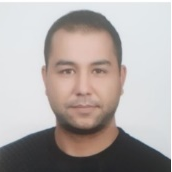International Journal of Intelligent Systems and Applications (IJISA)
IJISA Vol. 17, No. 3, 8 Jun. 2025
Cover page and Table of Contents: PDF (size: 1270KB)
Robust, Interactive, and Intelligent Captcha Model Based on Image Processing
PDF (1270KB), PP.1-14
Views: 0 Downloads: 0
Author(s)
Index Terms
CAPTCHA, Anomaly Behaviors Detection, Intrusion Detection, Image Processing, Machine Learning
Abstract
Ensuring online security against automated attacks remains a critical challenge, as traditional CAPTCHA mechanisms often struggle to balance robustness and usability. This study proposes a novel intelligent and interactive CAPTCHA system that integrates advanced image processing techniques with a convolutional neural network (CNN)-based evaluation model to enhance security and user engagement. The proposed CAPTCHA dynamically generates images with randomized object placement, adaptive noise layers, and geometric transformations, making them resistant to AI-based solvers. Unlike conventional CAPTCHAs, this approach requires users to interact with images by selecting and marking specific objects, creating a human-in-the-loop validation process. For evaluation, a CNN-based classifier processes user selections and determines their validity. A lightweight embedded software module tracks user interactions in real-time, monitoring selection accuracy and response patterns to improve decision-making. The system was tested on 6,000 images across five categories (airplanes, cars, cats, motorcycles, and fish), with an 80% training and 20% testing split. Experimental results demonstrate a classification accuracy of 99.58%, validation accuracy of 96.15%, and a loss value of 0.2078. The CAPTCHA evaluation time was measured at 47–53 milliseconds for initial validation and 17–23 milliseconds for subsequent evaluations. These results confirm that the proposed CAPTCHA model effectively differentiates human users from bots while maintaining usability, demonstrating superior resilience against automated solvers compared to traditional approaches.
Cite This Paper
Remzi GÜRFİDAN, Oğuzhan KİLİM, Tuncay YİĞİT, "Robust, Interactive, and Intelligent Captcha Model Based on Image Processing", International Journal of Intelligent Systems and Applications(IJISA), Vol.17, No.3, pp.1-14, 2025. DOI:10.5815/ijisa.2025.03.01
Reference
[1]A. S. El Ahmad, J. Yan, and L. Marshall, “The robustness of a new CAPTCHA,” Proceedings of the 3rd European Workshop on System Security, EUROSEC’10, pp. 36–41, 2010, doi: 10.1145/1752046.1752052.
[2]I. A. Althamary and E. S. M. El-Alfy, “A more secure scheme for CAPTCHA-based authentication in cloud environment,” ICIT 2017 - 8th International Conference on Information Technology, Proceedings, pp. 405–411, Oct. 2017, doi: 10.1109/ICITECH.2017.8080034.
[3]Y. Wang, Y. Huang, W. Zheng, Z. Zhou, D. Liu, and M. Lu, “Combining convolutional neural network and self-adaptive algorithm to defeat synthetic multi-digit text-based CAPTCHA,” Proceedings of the IEEE International Conference on Industrial Technology, pp. 980–985, Apr. 2017, doi: 10.1109/ICIT.2017.7915494.
[4]M. Tuncay GENÇOĞLU, E. Bahadir, T. Bilimler MYO, F. Üniversitesi, S. Güvenlik Bölümü, and A. Yesevi Üniversitesi TÜRTEP, “IPS Sistemlerde Yapay Zekânın Son Beş Yıldaki Gelişimi,” Bilgisayar Bilimleri, pp. 211–218, Oct. 2022, doi: 10.53070/BBD.1172803.
[5]J. Yan and A. S. El Ahmad, “A low-cost attack on a microsoft CAPTCHA,” Proceedings of the ACM Conference on Computer and Communications Security, pp. 543–554, 2008, doi: 10.1145/1455770.1455839.
[6]M. Baykara, F. Alniak, and K. Cinar, “Review and comparison of captcha approaches and a new captcha model,” 6th International Symposium on Digital Forensic and Security, ISDFS 2018 - Proceeding, vol. 2018-January, pp. 1–6, May 2018, doi: 10.1109/ISDFS.2018.8355316.
[7]A. Kolupaev and J. Ogijenko, “CAPTCHAs: Humans vs. bots,” IEEE Secur Priv, vol. 6, no. 1, pp. 68–70, Jan. 2008, doi: 10.1109/MSP.2008.6.
[8]A. A. Süzen, “UNI-CAPTCHA: A Novel Robust and Dynamic User-Non-Interaction CAPTCHA Model Based on Hybrid biLSTM+Softmax,” Journal of Information Security and Applications, vol. 63, p. 103036, Dec. 2021, doi: 10.1016/J.JISA.2021.103036.
[9]C. Pope and K. Kaur, “Is it human or computer? Defending e-commerce with captchas,” IT Prof, vol. 7, no. 2, pp. 43–49, Mar. 2005, doi: 10.1109/MITP.2005.37.
[10]M. Chew and H. S. Baird, “BaffleText: a human interactive proof,” https://doi.org/10.1117/12.479682, vol. 5010, pp. 305–316, Jan. 2003, doi: 10.1117/12.479682.
[11]H. S. Baird and T. P. Riopka, “ScatterType: a reading CAPTCHA resistant to segmentation attack,” https://doi.org/10.1117/12.587811, vol. 5676, pp. 197–207, Jan. 2005, doi: 10.1117/12.587811.
[12]W. Khalifa and A. Hasan, “A SURVEY OF CURRENT RESEARCH ON CAPTCHA,” International Journal of Computer Science & Engineering Survey (IJCSES), vol. 7, no. 3, 2016, doi: 10.5121/ijcses.2016.7301.
[13]J. Chen, X. Luo, Y. Guo, Y. Zhang, and D. Gong, “A Survey on Breaking Technique of Text-Based CAPTCHA,” Security and Communication Networks, vol. 2017, no. 1, p. 6898617, Jan. 2017, doi: 10.1155/2017/6898617.
[14]M. Kumar, M. K. Jindal, and M. Kumar, “Design of innovative CAPTCHA for hindi language,” Neural Comput Appl, vol. 34, no. 6, pp. 4957–4992, Mar. 2022, doi: 10.1007/S00521-021-06686-0/FIGURES/45.
[15]M. I. Hossen, Y. Tu, M. F. Rabby, M. N. Islam, H. Cao, and X. Hei, An Object Detection based Solver for {Google’s} Image {reCAPTCHA} v2. 2020.
[16]H. Gao, F. Cao, and P. Zhang, “Annulus: A novel image-based CAPTCHA scheme,” IEEE Region 10 Annual International Conference, Proceedings/TENCON, pp. 464–467, Feb. 2017, doi: 10.1109/TENCON.2016.7848042.
[17]S. Kulkarni and H. S. Fadewar, “Pedometric CAPTCHA for mobile Internet users,” RTEICT 2017 - 2nd IEEE International Conference on Recent Trends in Electronics, Information and Communication Technology, Proceedings, vol. 2018-January, pp. 600–604, Jul. 2017, doi: 10.1109/RTEICT.2017.8256667.
[18]M. Shirali-Shahreza and S. Shirali-Shahreza, “Drawing CAPTCHA,” Proceedings of the International Conference on Information Technology Interfaces, ITI, pp. 475–480, 2006, doi: 10.1109/ITI.2006.1708527.
[19]J. Yan and A. S. El Ahmad, “Usability of CAPTCHAs or usability issues in CAPTCHA design,” SOUPS 2008 - Proceedings of the 4th Symposium on Usable Privacy and Security, pp. 44–55, 2008, doi: 10.1145/1408664.1408671.
[20]S. Y. Huang, Y. K. Lee, G. Bell, and Z. H. Ou, “An efficient segmentation algorithm for CAPTCHAs with line cluttering and character warping,” Multimed Tools Appl, vol. 48, no. 2, pp. 267–289, Jun. 2010, doi: 10.1007/S11042-009-0341-5/FIGURES/24.
[21]J. Yan and A. S. El Ahmad, “Captcha robustness: A security engineering perspective,” Computer (Long Beach Calif), vol. 44, no. 2, pp. 54–60, Feb. 2011, doi: 10.1109/MC.2010.275.
[22]L. Zhang, Y. Xie, X. Luan, and J. He, “Captcha automatic segmentation and recognition based on improved vertical projection,” 2017 9th IEEE International Conference on Communication Software and Networks, ICCSN 2017, vol. 2017-January, pp. 1167–1172, Dec. 2017, doi: 10.1109/ICCSN.2017.8230294.
[23]H. S. Baird, A. L. Coates, and R. J. Fateman, “PessimalPrint: a reverse Turing test,” International Journal on Document Analysis and Recognition 2003 5:2, vol. 5, no. 2, pp. 158–163, Apr. 2003, doi: 10.1007/S10032-002-0089-1.
[24]K. Chellapilla and P. Y. Simard, “Using Machine Learning to Break Visual Human Interaction Proofs (HIPs),” Adv Neural Inf Process Syst, vol. 17, 2004, Accessed: Mar. 07, 2025. [Online]. Available: www.google.com,
[25]P. Wang, H. Gao, X. Guo, C. Xiao, F. Qi, and Z. Yan, “An Experimental Investigation of Text-based CAPTCHA Attacks and Their Robustness,” ACM Comput Surv, vol. 55, no. 9, Jan. 2023, doi: 10.1145/3559754.
[26]H. Çakır and N. Uluhatun, “Robust security against cyber threats with variety of captcha<p>Güvenlik kodu çeşitliliği ile siber tehditlere karşı güçlü güvenliğin sağlanması,” Journal of Human Sciences, vol. 15, no. 3, pp. 1414–1430, Jul. 2018, Accessed: Mar. 07, 2025. [Online]. Available: https://www.j-humansciences.com/ojs/index.php/IJHS/article/view/5201
[27]S. S. Rane and N. Shekokar, “3D Socio Graphical CAPTCHA based on reCAPTCHA against spammers and bots,” 2016 IEEE International Conference on Advances in Electronics, Communication and Computer Technology, ICAECCT 2016, pp. 372–377, Jul. 2016, doi: 10.1109/ICAECCT.2016.7942616.
[28]D. Brodić, A. Amelio, and R. Janković, “Exploring the influence of CAPTCHA types to the users response time by statistical analysis,” Multimed Tools Appl, vol. 77, no. 10, pp. 12293–12329, May 2018, doi: 10.1007/S11042-017-4883-7/TABLES/13.
[29]P. Roy, S. Ghosh, S. Bhattacharya, and U. Pal, “Effects of Degradations on Deep Neural Network Architectures,” Jul. 2018, Accessed: Mar. 07, 2025. [Online]. Available: https://arxiv.org/abs/1807.10108v6
[30]Y. Lv, F. Cai, D. Lin, and D. Cao, “Chinese character CAPTCHA recognition based on convolution neural network,” 2016 IEEE Congress on Evolutionary Computation, CEC 2016, pp. 4854–4859, Nov. 2016, doi: 10.1109/CEC.2016.7744412.
[31]Y. Shu and Y. Xu, “End-to-End Captcha Recognition Using Deep CNN-RNN Network,” Proceedings of 2019 IEEE 3rd Advanced Information Management, Communicates, Electronic and Automation Control Conference, IMCEC 2019, pp. 54–58, Oct. 2019, doi: 10.1109/IMCEC46724.2019.8983895.
[32]A. Thobhani, M. Gao, A. Hawbani, S. T. M. Ali, and A. Abdussalam, “CAPTCHA Recognition Using Deep Learning with Attached Binary Images,” Electronics 2020, Vol. 9, Page 1522, vol. 9, no. 9, p. 1522, Sep. 2020, doi: 10.3390/ELECTRONICS9091522.
[33]Z. Wang and P. Shi, “CAPTCHA Recognition Method Based on CNN with Focal Loss,” Complexity, vol. 2021, no. 1, p. 6641329, Jan. 2021, doi: 10.1155/2021/6641329.
[34]Y. Chen, X. Luo, S. Xu, and R. Chen, “CaptchaGG: A linear graphical CAPTCHA recognition model based on CNN and RNN,” Proceedings - 2022 9th International Conference on Digital Home, ICDH 2022, pp. 175–180, 2022, doi: 10.1109/ICDH57206.2022.00034.
[35]S. Sinha and M. I. Surve, “CAPTCHA Recognition and Analysis Using Custom Based CNN Model-Capsecure,” Proceedings of the 2023 International Conference on Emerging Techniques in Computational Intelligence, ICETCI 2023, pp. 244–250, 2023, doi: 10.1109/ICETCI58599.2023.10331187.


